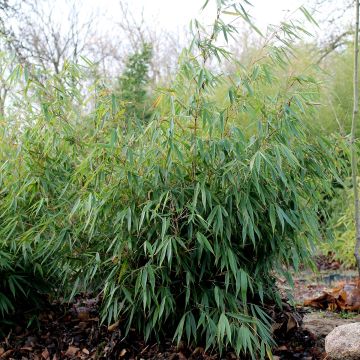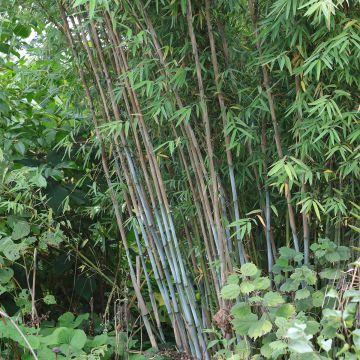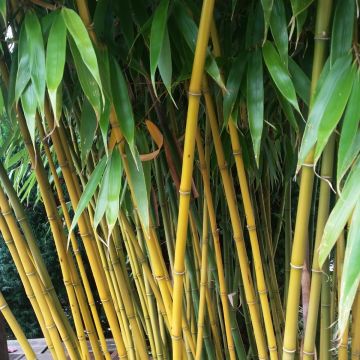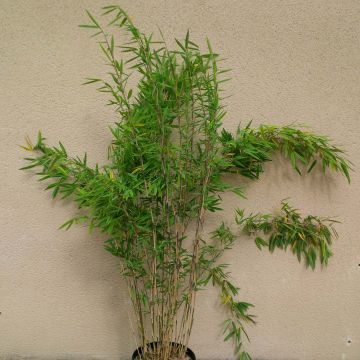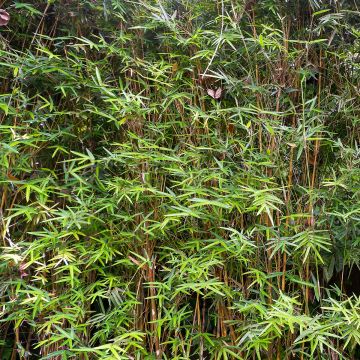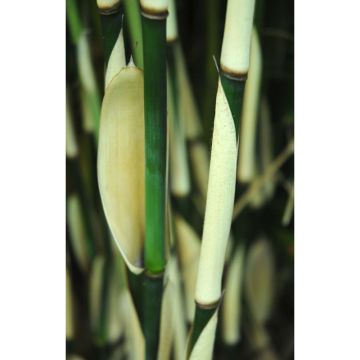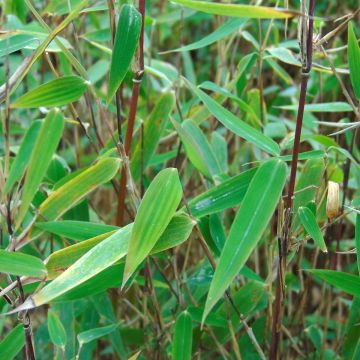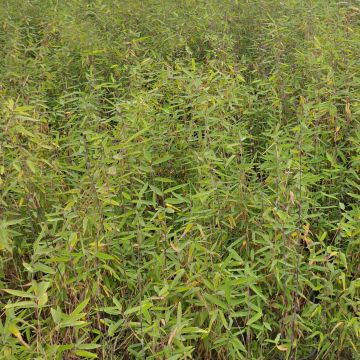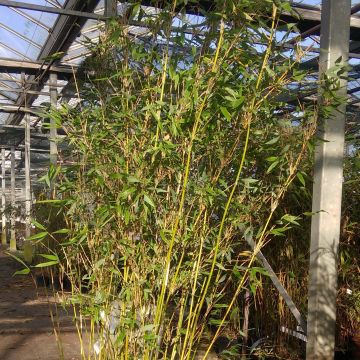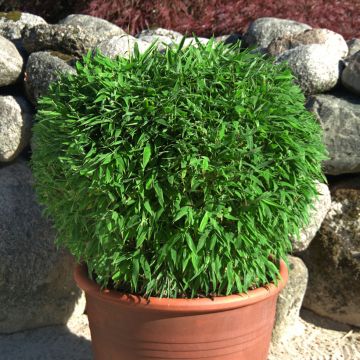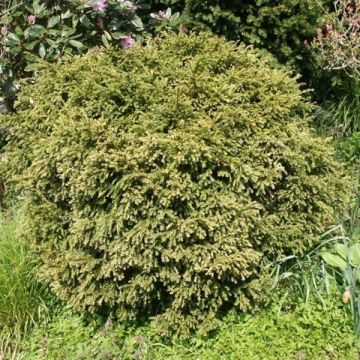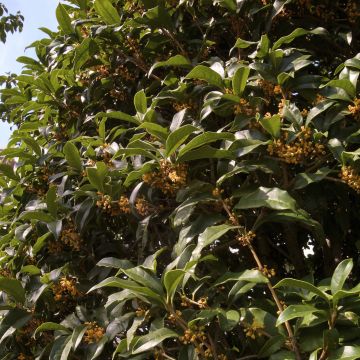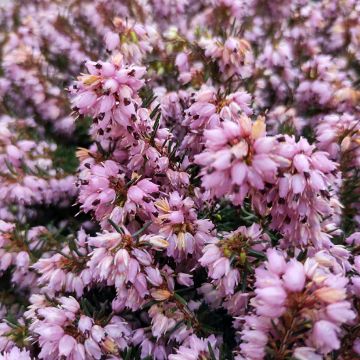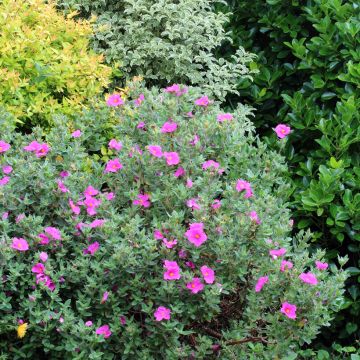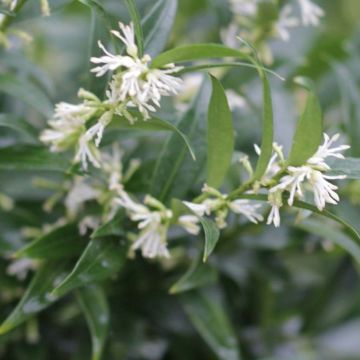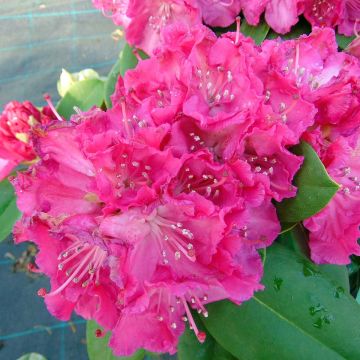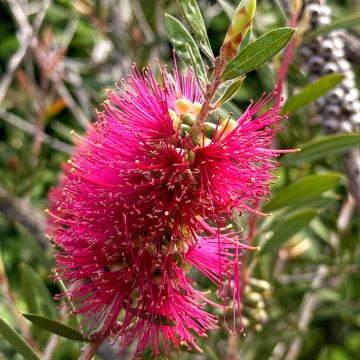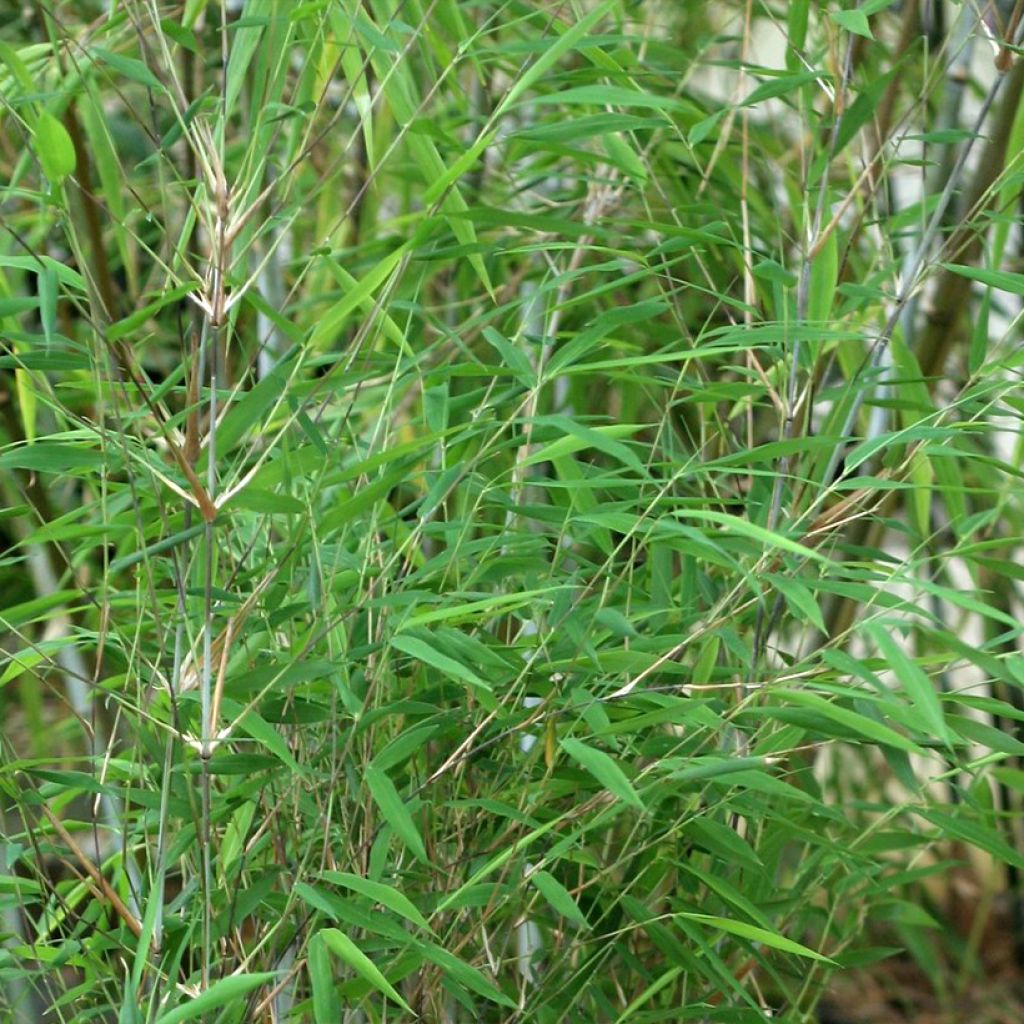

Fargesia Taibashan 2 - Bambou non traçant
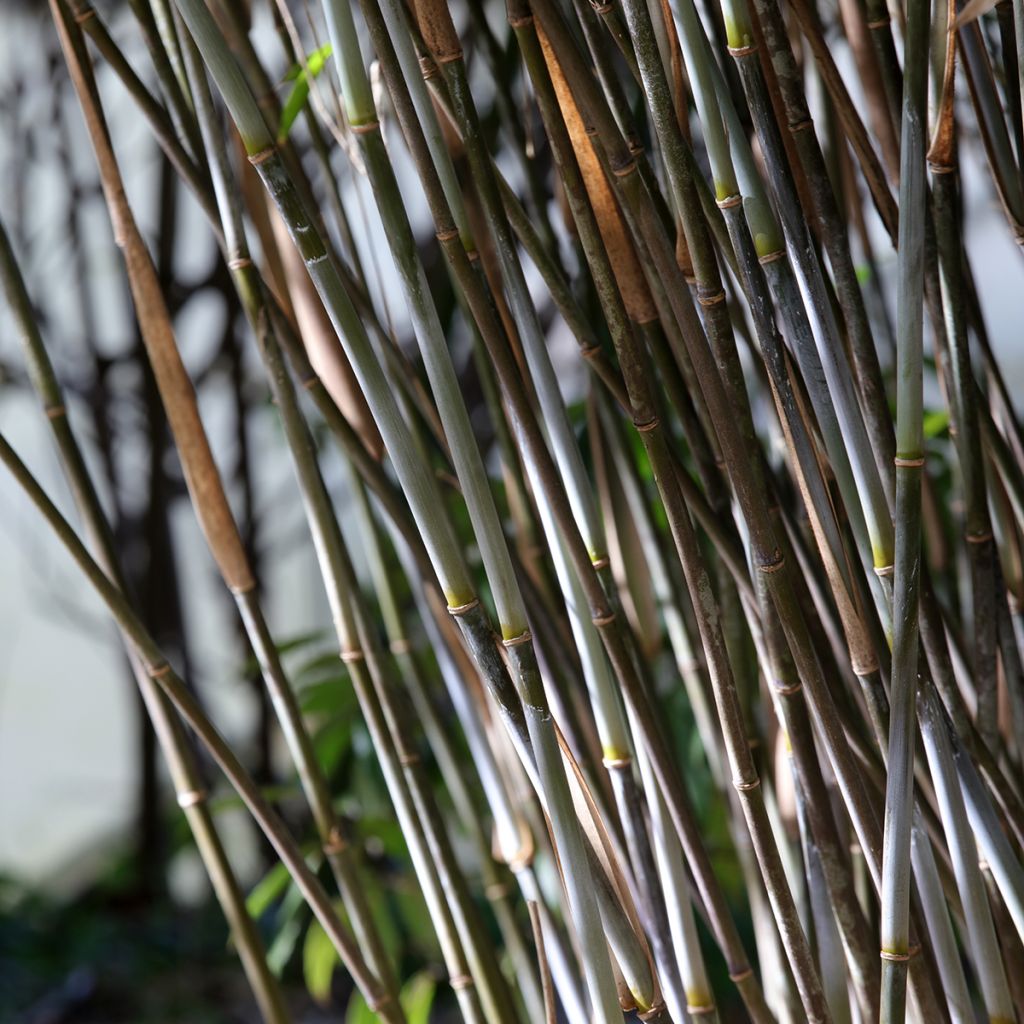

Fargesia Taibashan 2 - Bambou non traçant
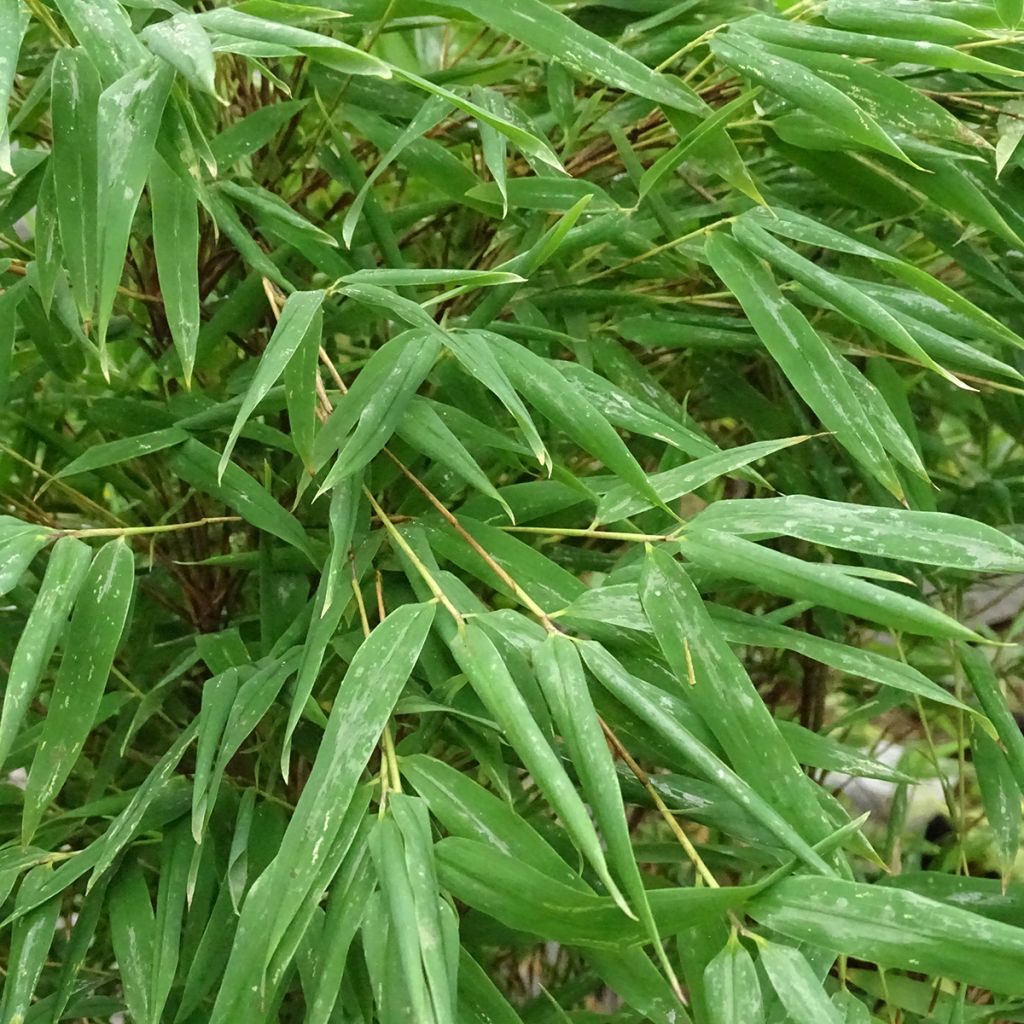

Fargesia Taibashan 2
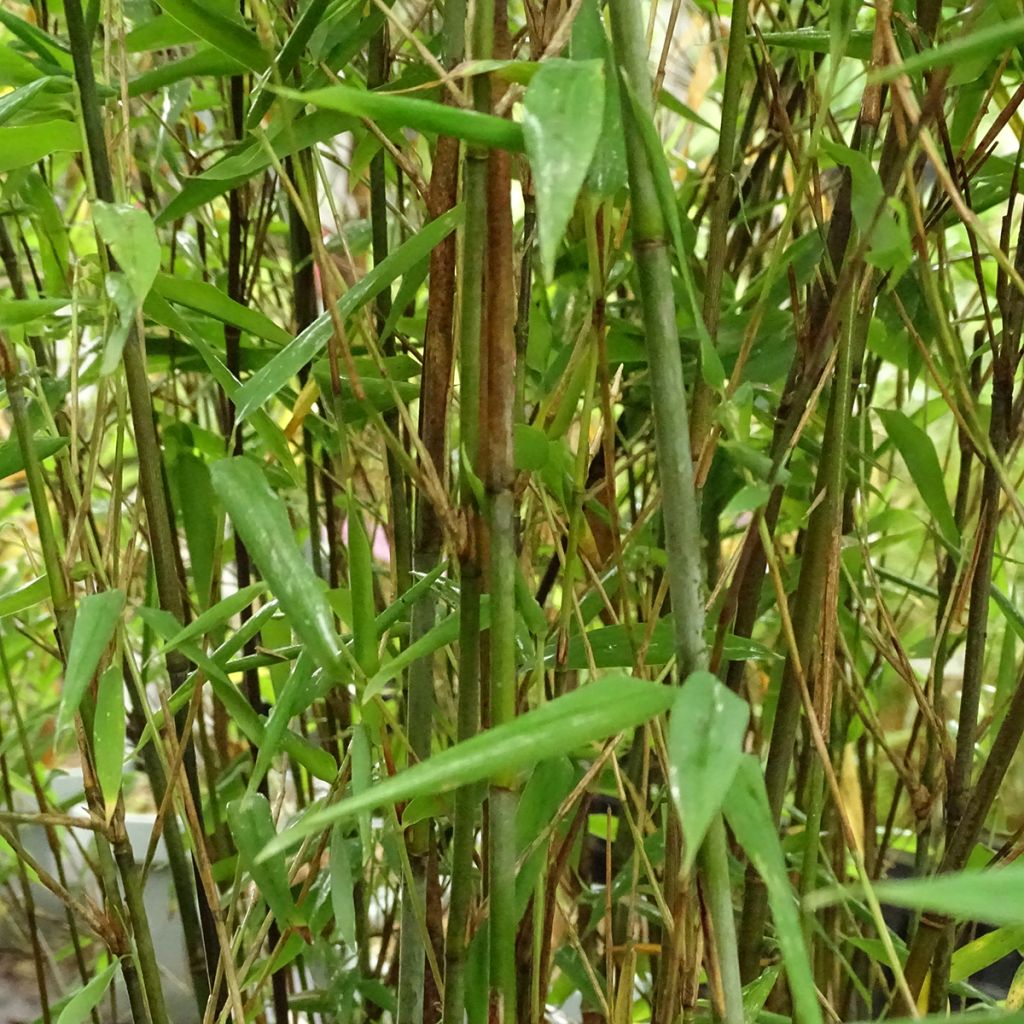

Fargesia Taibashan 2
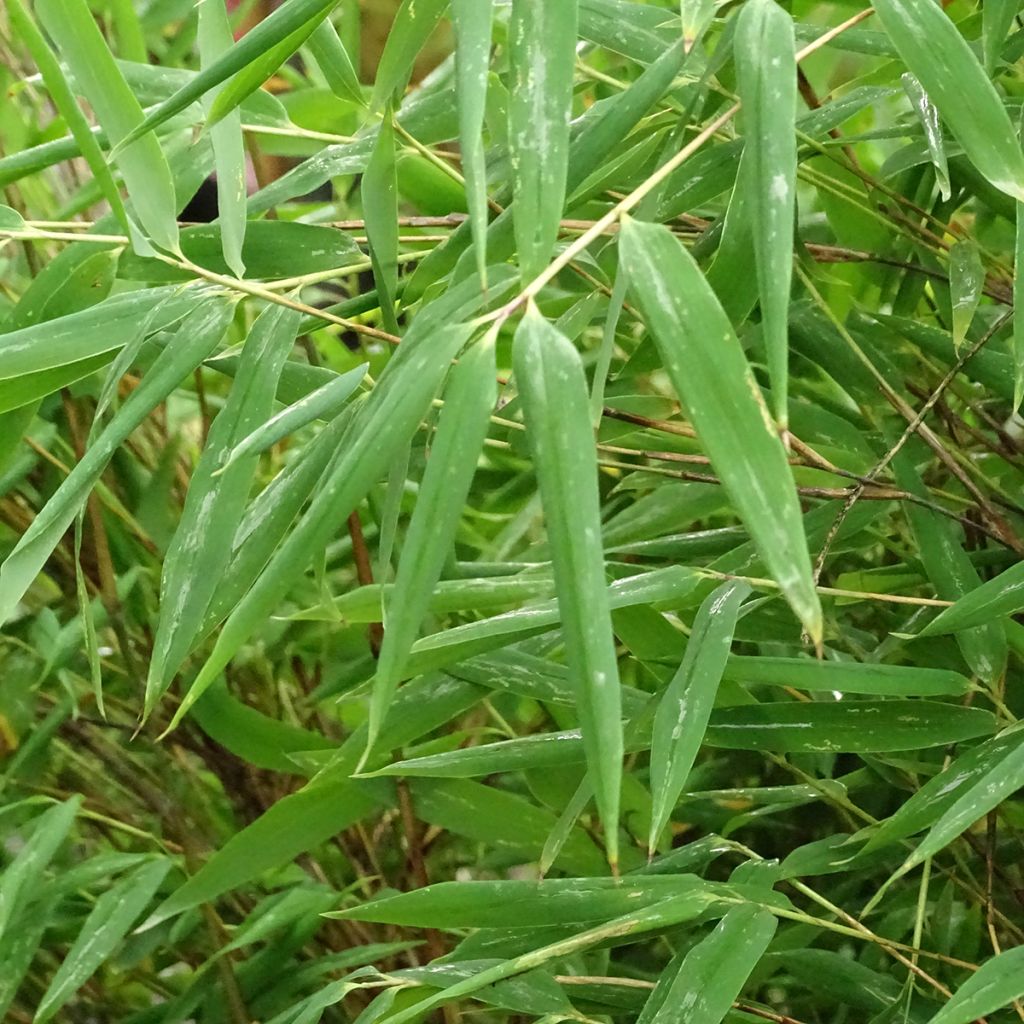

Fargesia Taibashan 2
Fargesia Taibashan 2
Fargesia Taibashan 2
Chinese fountain Bamboo
This item cannot be shipped to the selected country
Oversize package delivery charge from €6.90
More information
Oversize package delivery charge from €6.90
More information
Schedule delivery date,
and select date in basket
This plant carries a 24 months recovery warranty
More information
We guarantee the quality of our plants for a full growing cycle, and will replace at our expense any plant that fails to recover under normal climatic and planting conditions.
Oversize package: home delivery by special carrier from €6.90 per order..
Express home delivery from €8.90.
Does this plant fit my garden?
Set up your Plantfit profile →
Description
The Fargesia Taibashan 2 is a variety of non-spreading bamboo, with medium vigor, whose height will be limited to about 3 m. Its main advantage is its hardiness, which is particularly good due to its montane origin. Its bright green foliage is graceful, carried by slender canes whose color depends on the exposure. Yellow-green in the sun, they take on a reddish hue in the shade. The overall aesthetic is interesting and will perfectly suit a contemporary garden or create an exotic scene, even in cold climates. Non-invasive, this Bamboo can form isolated clumps or be planted as a hedge or in a border.
The Fargesia Taibashan 2 is a plant of the Poaceae family, a type of grass with woody stems that develops from a non-spreading rhizomatous stump, known as a clump-forming bamboo. In this type of bamboo, the rhizomes with very short internodes, develop slowly at the periphery of the stump, which gradually expands, but they also develop towards the center of the clump, which thus remains dense without thinning out in the middle.
This variety gets its somewhat strange name from its Chinese origin. The plant grows on Mount Taibai, located near the historic city of Xi'an (where the terracotta army was discovered). Shan meaning mountain in Chinese, it is also found under the name Taibaishan instead of Taibashan. As for the number 2, it is because another stump was discovered before it, logically named 1.
Growing in nature up to an altitude of 2700 m (8858 ft 4 in), this bamboo shows astonishing hardiness, as it can withstand temperatures as low as -25°C. This cold resistance is also due to the fact that although evergreen, it sheds some of its leaves, which then form an insulating layer above the roots.
Like its counterparts, it grows taller each year (by about 20 to 30%), until it reaches its adult height of 2.50 m (8 ft 2 in) to a maximum of 3 m. Its growth is moderately fast, rather slower than other varieties, and it is also slightly less dense, but eventually forms a beautiful clump. The slender culms have a yellow-green color when planted in the sun, while in semi-shade they are reddish. The lateral shoots are also predominantly red, creating a nice contrast with the lush green leaves. Fine and quite small, they give this bamboo a pleasant graphic quality. Tolerant of pruning, it can be planted in a container on a terrace; in the ground, it adapts to most soils, as long as they are not dry.
The Fargesia Taibashan 2 allows enthusiasts to create exotic scenes in their garden. Other hardy plants also have an exotic aesthetic, such as the Trachycarpus wagnerianus, a palm tree that is more compact than the famous T. fortunei, and can be easily recognized by its more compact fronds of great beauty. The Tetrapanax papyrifera Rex exhibits leaves with incredible, highly dissected patterns and, above all, immense size. You will border the latter with a rhizome barrier, as it is somewhat invasive. As for perennials, the Hedychium rubrum will delight you with its tropical-inspired flowering, as will the Eucomis comosa Pink Gin or pineapple flower.
Fargesia Taibashan 2 in pictures


Plant habit
Foliage
Botanical data
Fargesia
Taibashan 2
Poaceae
Chinese fountain Bamboo
China
Other Fargesia
View all →Planting and care
The Fargesia Taibaishan 2 prefers partial shade, although it can tolerate the sun, it is sensitive to intense sunlight and drought. Plant this bamboo in a rich, heavy soil that retains water well, but preferably without limestone. If necessary, replace the soil in your garden with good horticultural compost. Plant in spring or autumn. For creating a hedge, space the plants every 60 to 80 cm (23.6 to 31.5 in). An adult plant requires about 20 litres of water per week during hot periods, and 10 litres for the rest of the year. In a pot, monitor watering, especially when the foliage is abundant, and apply 2 handfuls of lawn fertilizer at the base of your non-invasive bamboo from early March to mid-April, this will make the foliage greener. This bamboo responds well to pruning. Young shoots can be devoured by slugs. Like all other Fargesia species, this non-invasive bamboo does not require the installation of a rhizome barrier when planting. It retains some of its foliage in winter and loses some leaves throughout the year, especially towards the end of autumn.
Planting period
Intended location
Care
This item has not been reviewed yet - be the first to leave a review about it.
Similar products
Haven't found what you were looking for?
Hardiness is the lowest winter temperature a plant can endure without suffering serious damage or even dying. However, hardiness is affected by location (a sheltered area, such as a patio), protection (winter cover) and soil type (hardiness is improved by well-drained soil).

Photo Sharing Terms & Conditions
In order to encourage gardeners to interact and share their experiences, Promesse de fleurs offers various media enabling content to be uploaded onto its Site - in particular via the ‘Photo sharing’ module.
The User agrees to refrain from:
- Posting any content that is illegal, prejudicial, insulting, racist, inciteful to hatred, revisionist, contrary to public decency, that infringes on privacy or on the privacy rights of third parties, in particular the publicity rights of persons and goods, intellectual property rights, or the right to privacy.
- Submitting content on behalf of a third party;
- Impersonate the identity of a third party and/or publish any personal information about a third party;
In general, the User undertakes to refrain from any unethical behaviour.
All Content (in particular text, comments, files, images, photos, videos, creative works, etc.), which may be subject to property or intellectual property rights, image or other private rights, shall remain the property of the User, subject to the limited rights granted by the terms of the licence granted by Promesse de fleurs as stated below. Users are at liberty to publish or not to publish such Content on the Site, notably via the ‘Photo Sharing’ facility, and accept that this Content shall be made public and freely accessible, notably on the Internet.
Users further acknowledge, undertake to have ,and guarantee that they hold all necessary rights and permissions to publish such material on the Site, in particular with regard to the legislation in force pertaining to any privacy, property, intellectual property, image, or contractual rights, or rights of any other nature. By publishing such Content on the Site, Users acknowledge accepting full liability as publishers of the Content within the meaning of the law, and grant Promesse de fleurs, free of charge, an inclusive, worldwide licence for the said Content for the entire duration of its publication, including all reproduction, representation, up/downloading, displaying, performing, transmission, and storage rights.
Users also grant permission for their name to be linked to the Content and accept that this link may not always be made available.
By engaging in posting material, Users consent to their Content becoming automatically accessible on the Internet, in particular on other sites and/or blogs and/or web pages of the Promesse de fleurs site, including in particular social pages and the Promesse de fleurs catalogue.
Users may secure the removal of entrusted content free of charge by issuing a simple request via our contact form.

































